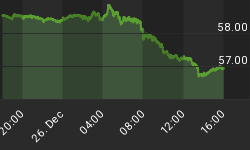Welcome to the modern-day alternative to the Flea Market. You might not be able to find an airplane crankshaft in the new digital world, but some things you would never have thought of can be found in this new treasure trove, from what appears to be the next form of “art” to someone else’s … farts.
It’s all thanks to Non-fungible tokens (NFTs), the auctions of which have become hugely popular this year, with expensive digital artwork also being sold this way.
In the first two months of this year, there were a total of $300 million in NFT sales, compared to $1.5 million a year ago.
Even Christie's auction house held the first digital-only art auction earlier this month and netted $69 million for the artist Beeple.
Also in the first move of its kind, robot artist Sophia is having “her” first artwork auction on Wednesday.
“I hope the people like my work, and the humans and I can collaborate in new and exciting ways going forward,” Sophia said in her studio.
The advent of ‘robotic’ art won’t be well received in the real art world, especially if Sophia starts fetching exorbitant prices for her algorithmic work. It takes the true art out of art, reducing it to mere numbers, but NFT enthusiasts with too much time on their hands don’t seem to care.
NFTs are unique cryptocurrency tokens used to represent assets such as digital art, movies or music. They can be bought and sold like any physical asset, but have the advantage of running on blockchain, meaning ownership and validity of the asset they represent can be accurately tracked.
The NBA Top Shot platform allows users to buy or sell officially licensed NBA video highlights, known as “Moments”.
The emerging trend is that people are willing to pay ridiculous amounts of money for digitized collectibles. While some digitized moments in the NBA are fetching over $200,000, it is now trending in the art world, too.
And it goes beyond this into the realm of the uber ridiculous.
New York artist and film director Alex Ramirez-Mallis is cashing in on the NFT craze by selling audio clips of his and his friends’ farts.
His NFT, “One Calendar Year of Recorded Farts,” which represents a year’s worth of fart audio clips recorded in quarantine, has so far sold one file to an anonymous buyer. The top bid for the file is currently $183.
“The NFT craze is absurd — this idea of putting a value on something inherently intangible…These NFTs aren’t even farts, they’re just digital alphanumeric strings that represent ownership”, Ramírez-Mallis told The Post.
Still, he said he hopes that his NFT farts will serve not only as a money-maker; rather, as a mockery of the NFT craze that will generate a few laughs if nothing else.
Elon Musk also briefly joined the NFT world before he changed his mind. Last Monday, Musk tweeted that he was selling his tweet as an NFT, featuring a two-minute-long video clip with lyrics “NFT for your vanity. Computers never sleep. It’s verified. It’s guaranteed.”
However, the following day he said that it “doesn’t feel right selling it” even though the highest bid for the tweet was $1.12 million, placed by Sina Estavi, the chief executive of Bridge Oracle.
Estavi continued with the shopping spree, though. Earlier this week, Estabi spent nearly $3 million on Twitter CEO Jack Dorsey's first tweet as an NFT.
Dorsey said that the profit from the sale of the tweet published in 2006 saying “just setting up my twttr,” will be converted to bitcoin and donated to GiveDirectly, an organization helping those living in poverty in Africa.
By Michael Kern for Safehaven.com

















